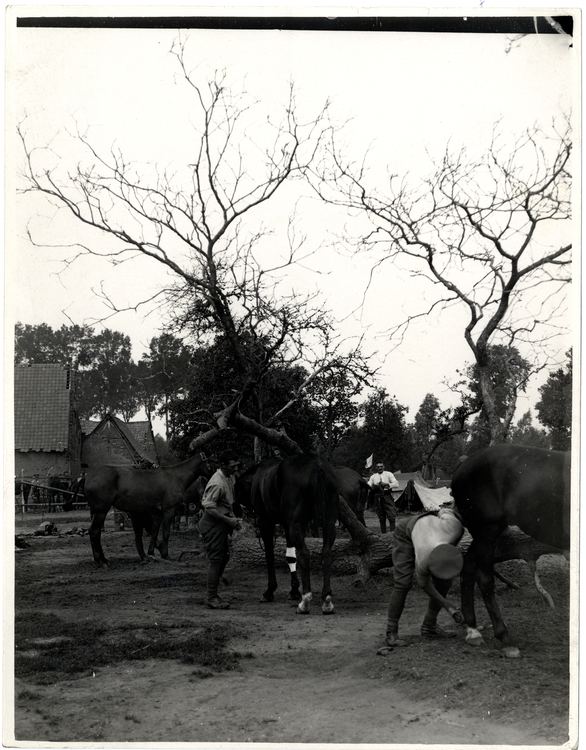Allegiance British Crown | ||
 | ||
Active September 1914 – March 1918 | ||
The 2nd Indian Cavalry Division was a division of the British Indian Army formed at the outbreak of World War I. It served on the Western Front, being renamed as 5th Cavalry Division on 26 November 1916. In March 1918, the 5th Cavalry Division was broken up. The British and Canadian units remained in France and the Indian elements were sent to Egypt to help constitute 2nd Mounted Division.
Contents
History
The division sailed for France from Bombay on 16 October 1914, under the command of Major General G A Cookson. During the war the division would serve in the trenches as infantry. Due to the difference on troop levels each cavalry brigade, once dismounted, formed a dismounted regiment.
In March 1916 the 2nd Indian Cavalry Division was attached to the British Fourth Army. On 1 July 1916 the 9th (Secunderabad) Cavalry Brigade moved into a reserve position on the Somme, ready to exploit any breakthrough. The same brigade was sent up again on 14 July, to Montauban to support the attack on the Bazentin – Longueval ridge. At 17.30 the leading two regiments were ordered to advance between High Wood and Delville Wood. The British 7th Dragoon Guards and the Indian 20th Deccan Horse galloped forward to a position between the woods, but little could be achieved. At 03.30 on 15 July, they returned to Montauban, having suffered casualties of 74 men and 110 horses. Cavalry units were again brought forward on 15 September to support the attack on Flers-Courcelette, but were not drawn into the fighting and played no further part in the Battle of the Somme except as labour units in reserve. The high number of officer casualties suffered early on had an effect on its later performance. British officers that understood the language, customs, and psychology of their men could not be quickly replaced, and the alien environment of the Western Front had some effect on the soldiers. The 2nd Indian Cavalry Division was renamed the 5th Cavalry Division on 26 November 1916 and attached to the 5th Army. In March 1918 the division was transferred to Egypt, although its two British regular cavalry regiments (8th Hussars and 7th Dragoon Guards) remained in France.
Order of battle
5th (Mhow) Cavalry Brigade (left on 15 September 1915 for 1st Indian Cavalry Division)
7th (Meerut) Cavalry Brigade (left in June 1916 for Mesopotamia)
9th (Secunderabad) Cavalry Brigade
3rd (Ambala) Cavalry Brigade (joined on 15 September 1915 from 1st Indian Cavalry Division)
Canadian Cavalry Brigade (joined on 17 June 1916 from 3rd Cavalry Division)
II Indian Brigade, Royal Horse Artillery (XVII Brigade, Royal Horse Artillery from 26 November 1916)
